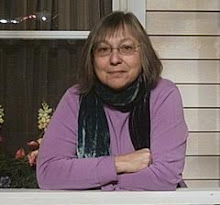
P.S. 1 is an exciting, cutting edge experimental art center, affiliated with MOMA and located in Long Island City, a burgeoning artistic hub. The center is literally an experimental space, not a museum with a permanent collection, and the setting, itself, is unusual. P.S. 1 was a school building in the 19th century, and the original structure remains intact. It is fun to walk the halls and find exhibits tucked away in a boiler room or a swimming pool you can walk under or a former classroom housing a unicorn. The experience and arrangement of space is very much a focus here. The exhibits change frequently and are too new to categorize. One fascinating production, by the auditory artist Janet Cardiff, had visitors walking through the school corridors wearing headphones and listening to Ms. Cardiff whisper directions: 'Now go behind the stairs. Here it is. This is the place. Sit down and wait...Close your eyes." The stimuli are multi-dimensional, and the interpretations are uniquely individual.

The art center emerged in the 1970's when the abandoned school building was saved from oblivion by Alanna Heiss of The Institute for Art and Urban Resources, whose mission it was to convert abandoned buildings into artistic spaces. The history and evolution of the building is itself, colorful. P.S. 1 was constructed during the tenure of Long Island City mayor Patrick J. Gleason and the building was at the center of a fiscal scandal that led to the mayor's being voted out of office. He refused to leave, requiring the court to intercede, but managed to destroy the contracts and documents relating to the school before he stepped down. Consequently, to this day the architect of P.S. 1 is unknown. But Gleason reappeared, regaining office for a brief, one-term period preceding the incorporation of Long Island City into the City of New York in 1898.
During the area's heyday, when Hunters Point was a transportation hub, the school was overcrowded. The building was then enlarged in anticipation of even higher enrollment, which never came to pass. The closing of the ferry lines and the construction of the Queensboro Bridge isolated the area from Manhattan and the rest of Queens. By the 1960's, the residential population had shrunk and the school, no longer needed, was abandoned and its beautiful clock tower was razed.
Happily, the area is no longer isolated and, changing yet again, has become an artistic hub. Not far are the 5 Pointz Graffiti Mecca, Noguchi museum, and Socrates Sculpture Park. The museum is open noon to 6pm, Thursday to Monday.







